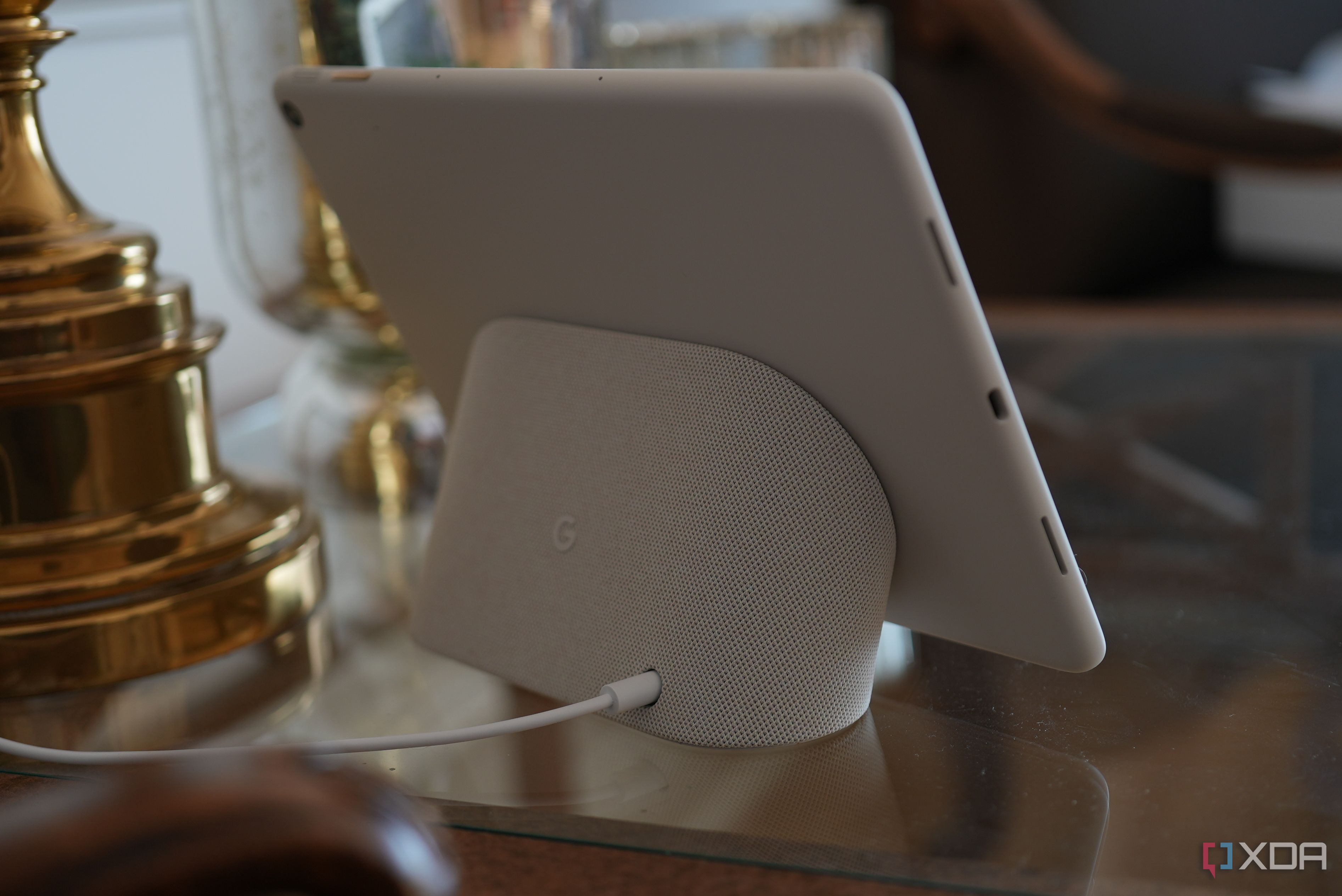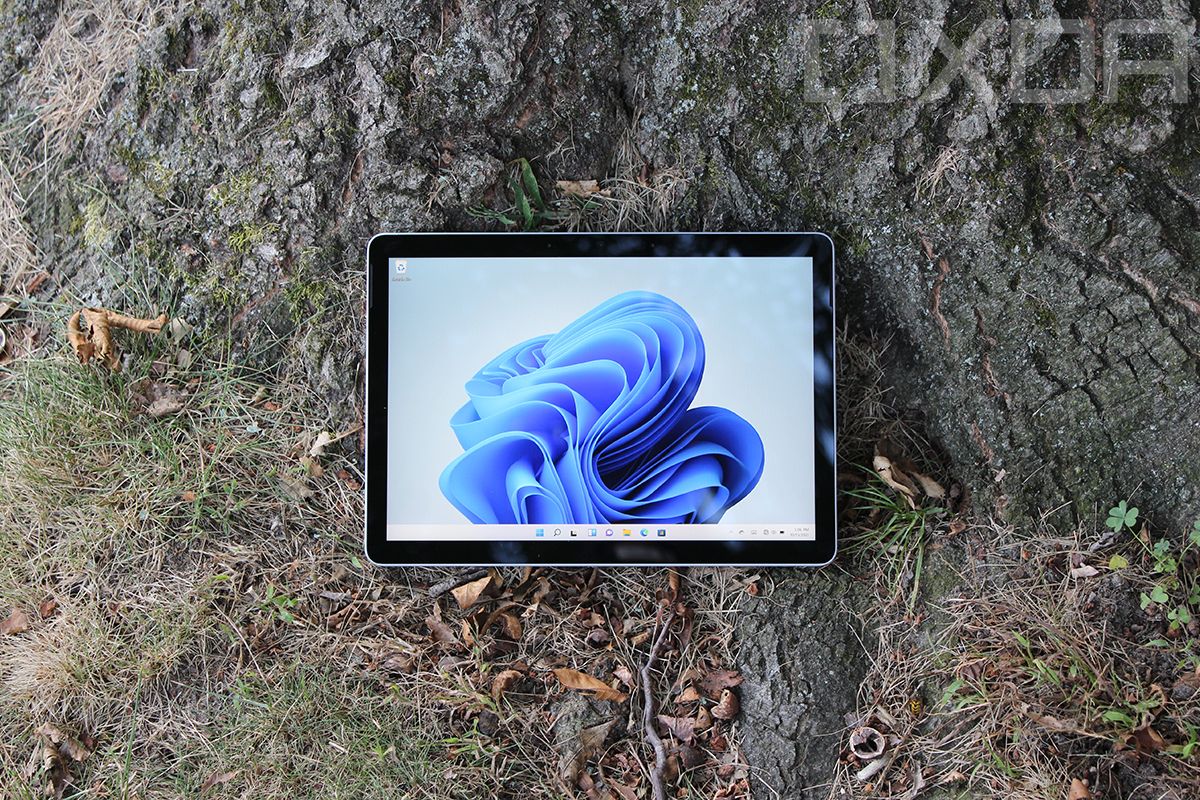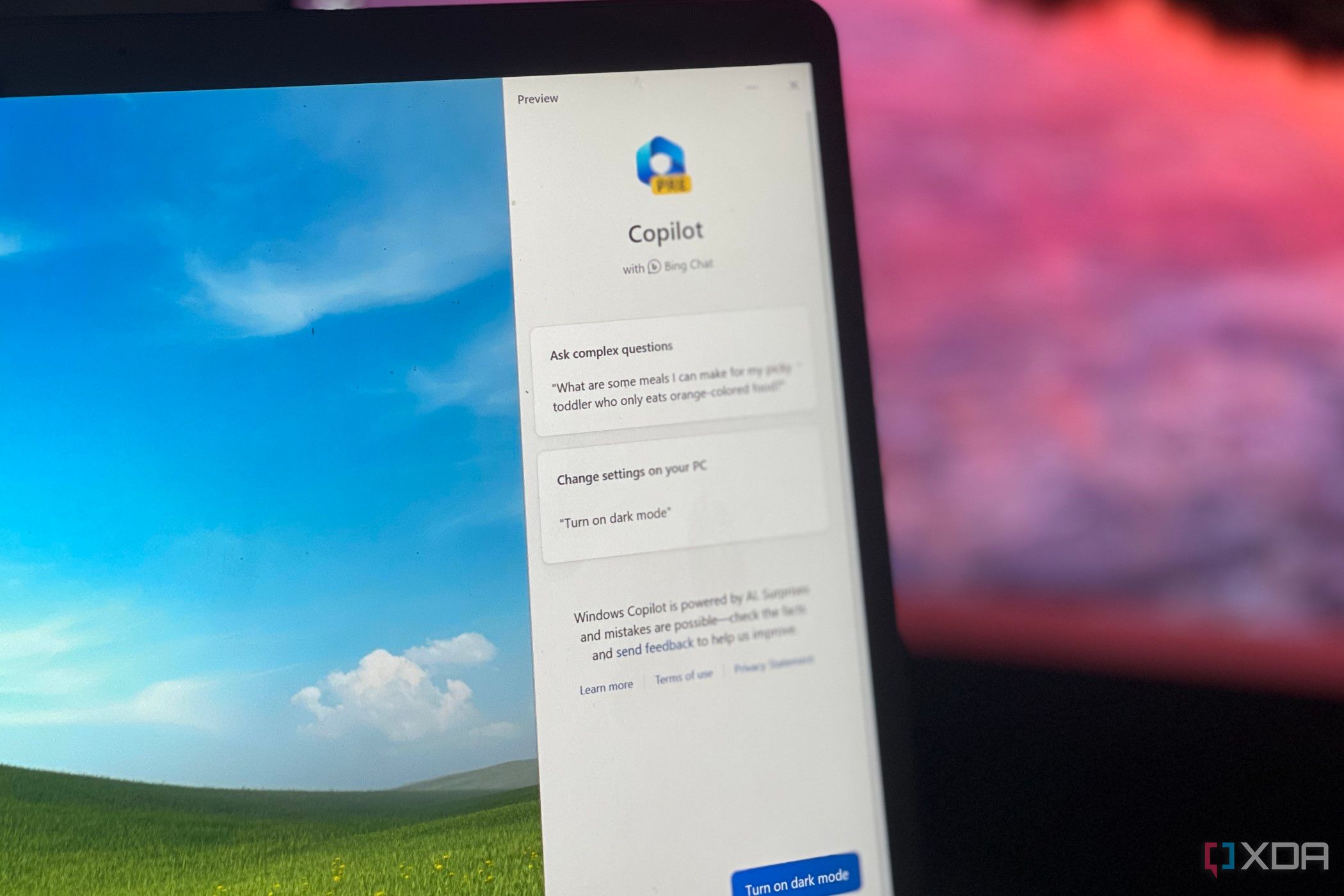The Surface Pro 8 is one of my go-to devices. Like a lot of the best Windows tablets, it's super convenient and easy to carry around and enjoy Windows 11 on the go. As of recently, though, I found myself using one of the best Android tablets instead: the Google Pixel Tablet.
When I'm not on my PC working, it's become one of my favorite gadgets thanks to the speaker dock and the versatility of Android. But in using both the Pixel Tablet and the Surface Pro 8 side by side, it's become clear that Microsoft can learn a thing or two from Google's latest tablet effort.
1 Move the pogo pin location for more accessories
The main reason I love my Pixel Tablet is the speaker dock, which attaches via a pogo pin on the back. Right now, the Surface Pro 8 has a similar pin, but it's on the bottom of the device, and it's only for keyboards. I'd love to see Microsoft take inspiration from Google and move that pin to the back of the next Surface.
It would be cool to have a cable-free docking station with USB-C ports, USB-A ports, and even HDMI ports while I have my Surface hooked up to a monitor. Of course, we do already have accessories like the Surface Dock for this, but these connect over the Surface Connect port. Moving that pin to the back would open up a whole new ecosystem of accessories — projectors, speakers, USB docks, you name it.
2 Smaller tablets can work and are more comfortable to use
Next up is something a bit more obvious. The Surface Pro 8 might be a tablet, but it's large, at around 11.3 inches in length. On the other hand, the Pixel Tablet is more compact at a smaller 10.16 inches. Using my Pixel Tablet while sitting on the sofa and just casually browsing the web is a good way to remind me that not every tablet has to be huge. It's super easy to grab a smaller tablet in your hand like you would a phone.
I know that Microsoft already has the Surface Go 3, which is about 9.65 inches long, but there once was a day when Windows tablets were even smaller than that. Remember the Windows 8 era? There were so many 8-inch tablets like the Dell Venue 8 Pro. With Windows 11 now being optimized for tablets with features like a collapsed taskbar, it's time Microsoft remembered the old days. Bigger doesn't always mean better.
3 Can Windows Copilot be like Google Assistant?
Another top feature of the Pixel Tablet is the integration with Google Assistant. Connected to the speaker dock, I can just ask my tablet all kinds of questions about the weather, sports scores, and more. All of this was something I used to be able to do on my Surface (many years ago) with Cortana. But the assistant has since been discontinued on Windows, making Windows tablets a lot less useful as smart devices.
It's true you can download and use Alexa, but that's a third-party app. Microsoft doesn't have its own virtual assistant anymore. But could Windows Copilot one day take over for Cortana? At least right now, it doesn't support voice input and only works with text, but backed by Bing Chat and AI, can Microsoft turn Copilot into its own Google Assistant? Only time will tell.
So many software tweaks could make Windows more useful as smart devices
All this said, I wonder if Microsoft is even thinking about a future where tablets can double as smart displays. We've already seen Microsoft test the option to pin the widgets board full screen in Windows 11 build 23521. Imagine using that as a hub mode of sorts and seeing all your important information at a quick glance. The basics are there, and with the Pixel tablet being so successful, maybe Microsoft could launch its own take on the product soon.





0 Comments